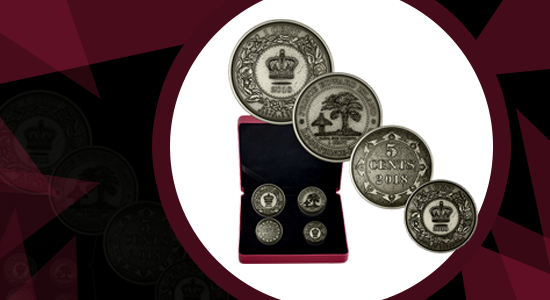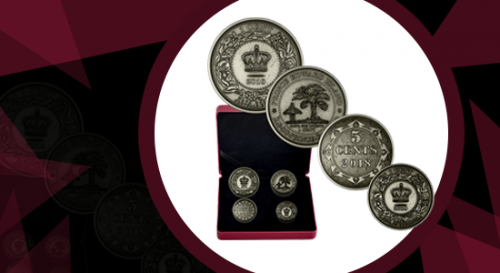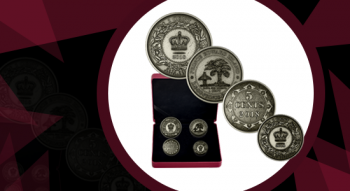Last updated on May 2nd, 2024 at 03:35 pm
Last Updated on May 2, 2024 Posted by Colonial Acres Coins
Prior to Confederation in 1867, each Canadian province formed a separate British colony which meant that each one had its own unique cultural identity and even their very own coins. This is a fact that adds an interesting note of diversity to coins of Canada and the country’s coin history in general. The Royal Canadian Mint celebrates this time with a Pure Silver 4-Coin Set – Before Confederation: Colonial Currency of the Atlantic Provinces. The set re-visits the 19th-century reverse designs – the work of L.C. Wyon – whose engraved artwork was featured on numerous coins, including those of Prince Edward Island, Nova Scotia, New Brunswick and Newfoundland.
The Historical Importance of These Coins
The lack of a uniform standard, as well as chronic currency shortages, mark the pre-Confederation era in British North America. In commercial activities and trade, supplements to imperial coinage often included foreign currency, tokens and even privately made coins. In 1857, the Province of Canada decided to switch to a currency system based on decimal values and the Atlantic colonies soon followed by introducing their own decimal coinage between 1858 and 1871.
A Closer Look at the Set
The set consists of four different coins: the New Brunswick one cent, the Newfoundland five cent, the Prince Edward Island one cent and the Nova Scotia one cent.
- Nova Scotia One Cent – the design of this particular coin is an almost exact copy of the New Brunswick coin of the same value. Modelled after the 1861 issue, this one-cent coin boasts an ornamental flourish, as well as the date “2018.”
- Newfoundland Five Cent – characterized by its more ornate design, the Newfoundland five cent is based on an 1880 issue, with the reverse featuring the denomination “5 CENTS” and the date “2018.” Both are framed by an arabesque pattern.
- Prince Edward Island One Cent – this was the only decimal coin to ever be struck for the province. The coin’s reverse features an oak tree design inspired by one of the provincial seals and was released in 1872. Beneath an oak tree representing Great Britain, there is an inscription in Latin PARVA SUB INGENTI (the small under the protection of the great), as well as the face value “1 CENT.” The counties of Prince Edward Island are symbolized by three oak saplings.
- New Brunswick One Cent – very similar in design to the Nova Scotia one cent, this coin displays St Edward’s Crown surrounded by mayflowers and roses, though, with a number of slight variations. Among these variations is the noticeable absence of a rosebud on the bottom right of the Nova Scotia cent.
Looking to Add This Set to Your Collection? Check Out Colonial Acres Coins
If you’re looking to invest in coins of Canada to add to your collection, as well as in this particular silver 4-coin set, the best place to do that is Colonial Acres Coins. Colonial Acres has been in business for more than two decades and offers some of the rarest and most interesting coin pieces available, as well as the latest creations from the Royal Canadian Mint. Additionally, Colonial Acres is also home to a professional team of expert numismatists with years of experience who are able to provide detailed knowledge and information on virtually any coin piece you can think of. Get in touch with Colonial Acres Coins today and ensure your collection is at its most best at all times.




